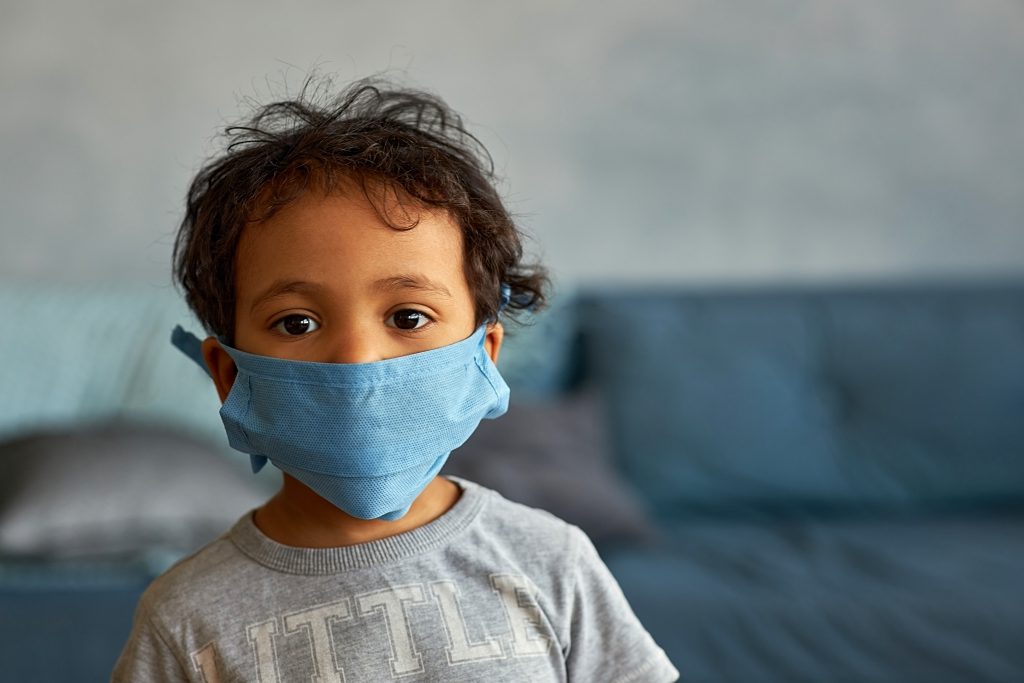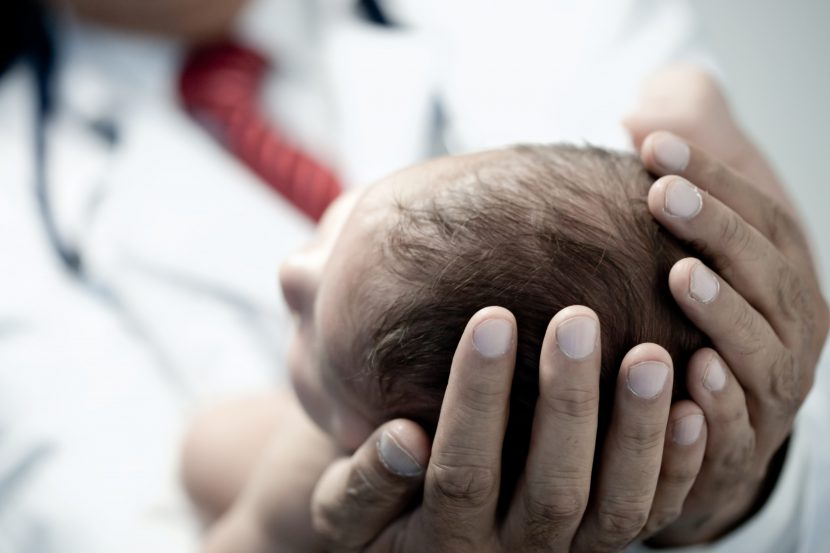Pediatric intensive care is fundamental in reducing morbidity and mortality globally. In rural areas, the majority of hospitals is lacking designated intensive care units, healthcare staff trained to care for critically ill children, and rapid access to necessary medications, supplies and equipment. Consequently, children in rural areas and other resource-limited settings face increasing barriers to pediatric care and constant risks for their life.
What is pediatric intensive care?
Children who require emergency care have unique needs, especially when emergencies are serious or life-threatening. Pediatric intensive care represents a highly specialized discipline with a prominent role in the treatment of critically ill children (Springer Open, 2018).
The concept of critical care developed during the poliomyelitis epidemic between the 1920s and 1950s when the number of critically ill patients led to the development of dedicated areas, “intensive care units,” that provided continuous care and monitoring (Frontiers in Pediatrics, 2016). The first pediatric intensive care unit – PICU – was opened at the Children’s Hospital of Goteborg in western Sweden (Frontiers in Pediatrics, 2016).
Increasingly, multiple technical innovations with sophisticated therapeutic and diagnostic possibilities emerged, including mechanical ventilation to newborns with respiratory distress syndrome, postoperative assistance to children with sepsis or cases of severe pneumonia, extracorporeal membrane oxygenation (ECMO), dialysis or plasmapheresis, giving rise to a branch of medicine that has greatly reduced infant mortality (American Academy of Pediatrics, 2013).
Indeed, mortality is inversely correlated to pediatric intensive care units’ availability, to the number of pediatric intensivists, the number of beds, and the number of specialized pediatric centers (Medicina Intensiva, 2004). As such, logistic and financial limitations, deficiencies in the supporting disciplines – laboratory, imaging techniques, surgery, other sub-specialties – a precarious general patient condition secondary to advanced illness or denutrition, delays in admission and inadequate first provided treatments, and insufficient professional training in certain areas may all contribute significantly to child mortality (MedicinaIntensiva, 2004).
Pediatric intensive care units in rural areas
Regrettably, the distribution of pediatric intensive care units around the world is uneven. The lack of sufficient resources – all concentrated in specific areas – and of strong political will in rural areas could affect hospitals’ abilities to ensure lifesaving care for children (Pediatric Emergency Care, 2020).
Rural hospitals have indeed cut back on a number of services, including skilled nursing care, obstetrics and pediatric care, moving these sections away from general community hospitals towards more specialized children’s hospitals and academic centers in major cities, in a process called “regionalization” (STAT, 2021). While regionalization may allow for more expert care of children with specialized disorders, it concentrates resources in specific areas, leaving out many rural areas (STAT, 2021).
In fact, especially during the past decade, access to healthcare services provided by rural hospitals has changed in two major ways. First, there has been a substantial increase in the number of rural hospitals that have closed or converted (Rural Health Research Gateway, 2021). Secondly, many rural hospitals have reduced or terminated services historically considered essential hospital services, including neonatal intensive care and pediatric trauma care (Rural Health Research Gateway, 2021).
A set of overlapping factors has therefore led to an expanding gap in the level of care available in pediatric intensive care units worldwide. As different researches show, including the Global Burden of Disease (GBD) study, the majority of childhood deaths in these settings result from preventable and reversible causes (The Lancet, 2015). It has been shown that the first 24 hours of hospitalization represent the most vulnerable period with a third of patient deaths occurring during this time, too often not prevented by the delay in recognition, late presentation, lack of resources (Molyneux E, 2006).
In fact, resource-limited settings, or areas where the capability to provide care for life-threatening illness is limited to basic health care resources, pose a specific challenge to the development and sustainability of critical care services (Critical Care Medicine, 2006). As such, it has been shown that the development of effective pediatric emergency and critical care services in resource-limited countries can substantially reduce global mortality in children under 5 years of age (Pediatric Anesthesia, 2009).
Pediatric care during the Covid-19 pandemic
Covid-19 has represented worldwide a wakeup call highlighting the urgency to increase the number of pediatric intensive care units. The pandemic showed the consequences of years and years of health care cuts, inadequate policies and delayed choices, and the highest cost has in too many cases been paid by children who have not had access to pediatric intensive care and have died as a result of these failures (La Repubblica, 2022).

In fact, although evidence seems to indicate that children have lower susceptibility than adults to severe acute respiratory syndrome coronavirus 2 (SARS-CoV-2) infection, a consistent number of pediatric cases has required admission to the pediatric intensive care unit, respiratory support with a mechanical ventilation and additional life-saving interventions (Italian Journal of Pediatrics, 2021).
As rural areas are generally not provided with PICU, children with respiratory failure and impaired vital functions are admitted to adult intensive care units. However, the fact is that the child is a patient with precise characteristics and needs, who has to be treated with specific care and expertise. For this reason, in desperate cases children are transferred to facilities equipped with PICUs exposing them to long and complex journeys, wasting time vital to the child’s survival (Pediatric Research, 2021).
When a child’s life is lost due to lack of pediatric intensive care
In January 2022, in less than 48 hours, Covid-19 and the health system failures took away a two-year-old girl’s life in Italy. The girl had a fever when her condition started to aggravate. She was taken to the nearest hospital, an hour away from her home, where she tested positive for Covid-19 and was immediately hospitalized. The diagnosis was bilateral interstitial pneumonia. Hour after hour, the child’s health condition continued to worsen (La Repubblica, 2022).
For this reason, the decision was made to transfer her to the intensive care unit of another hospital, another hour away by ambulance – where she arrived in a very serious condition. Her lungs were compromised, she had serious difficulty breathing and her pulse ox was at the lowest tolerable level. She was immediately put on assisted ventilation and stabilized. But the hospital’s intensive care unit was an adult division, not suited to handle the complications and health vulnerabilities of a two-year-old child (Corriere della Calabria, 2022).
Therefore, it was decided to transport her to the nearest pediatric intensive care unit, in the capital of Italy, over 600 kilometers away. An Air Force vehicle took the ambulance with the child on board towards the necessary primary care. By the time she arrived, it was too late, her condition had deteriorated too much and the child died. Those 48 hours of delay in providing her the proper care were fatal (La Repubblica, 2022).
It is not possible to know with certainty if the child would have been saved if a pediatric intensive care unit had been present in her region, but surely the total lack of necessity to receive the needed health assistance implies a dramatic denial of the child’s right to health and right to life. The death of this child is of a gravity to remember and not to overlook, nor remain indifferent.
The fact that in some regions of Italy the number of pediatric intensive care beds per million inhabitants is equal to zero requires an immediate intervention, with decisive actions coordinated at multiple levels. Only then can children’s rights be effectively enforced as guaranteed by the Constitution and by the most important international conventions.
International guarantees to provide adequate pediatric care
In 2000 and 2015, world leaders set key goals to support a rights-centered development. Specific to pediatrics, Millenium Development Goal 4 and Sustainable Development Goal 3 sought to drastically reduce under-5-year mortality rates (Frontiers in Pediatrics, 2016). Despite a rapid reduction in infant mortality for some countries, the progress in rural areas remained insufficient to meet the goal (Pediatric Research, 2021). Promoting the effective activation of pediatric intensive care units in the rural areas of the world would significantly contribute to its final achievement.
Ensuring prompt and effective care for seriously ill children is an essential prerequisite for meeting fundamental international requirements, including the right to adequate health as set out in Article 25 of the Universal Declaration of Human Rights, the right to life under Article 2 of the ECHR and the right to health as invoked in Article 24 of the Convention on the Rights of the Child.
The Committee interprets children’s right to health as defined in Article 24 as an inclusive right, extending to timely and appropriate prevention, health promotion, curative, rehabilitative and palliative services aimed at fulfilling also children’s right to grow and develop to their full potential and live in conditions that enable them to attain the highest standard of health through the implementation of programs that address the underlying determinants of health (Committee on the Rights of the Child, 2013).
“States parties shall strive to ensure that no child is deprived of his or her right of access to such health care services.”
– Article 24, paragraph 1, Convention on the Rights of the Child
State parties have the obligations to respect, protect and fulfill human rights, including children’s right to health. Indeed, in accordance with Article 4 of the same Convention, States parties shall fulfill the entitlements contained in children’s right to health to the maximum extent of their available resources and, where needed, within the framework of international cooperation. All States, regardless of their level of development, are required to take immediate actions to implement these obligations as a matter of priority (Committee on the Rights of the Child, 2013).
No time to waste in ensuring the right to life and health
Implementing the number of pediatric intensive care units to respond to emergencies and serve as lifesavers also in rural areas of the world is a duty that cannot be delayed anymore. The time is now and states must act with responsibility to fully fulfill children’s rights.
Providing high quality pediatric care to the global community is a legal and moral obligation. States, international organizations and all the other stakeholders involved around the world must work collaboratively. By building on past experiences and lessons learned, as well as by investing in research, education, funds, information sharing and ongoing technological innovations, pediatric care should and can be advanced through synergistic actions. These actions must spread awareness of children’s rights and of their unique clinical needs, and implement targeted procedures to prevent children living in rural areas from being deprived of adequate health care.
Humanium launches an urgent call to action for the effective establishment of pediatric intensive care units in rural areas and low income countries so that the right to health and the right to life of every child are respected, enforced, safeguarded, without discriminations of any kind.

Join us in making children’s right to life effective worldwide by sponsoring a child, making a donation or becoming a volunteer!
Written by Federica Versea
Bibliography:
American Academy of Pediatrics. (2013). Joint policy statement—Guidelines for care of children in the Emergency Department. Retrieved from Journal of Emergency Nursing: https://www.jenonline.org/article/S0099-1767(13)00005-6/pdf, accessed on March 25, 2022.
Committee on the Rights of the Child. (2013). General comment No. 15 (2013) on the right of the child to the enjoyment of the highest attainable standard of health (art. 24)*. Retrieved from United Nations – Convention on the Rights of the Child: https://docstore.ohchr.org/SelfServices/FilesHandler.ashx?enc=6QkG1d%2FPPRiCAqhKb7yhsqIkirKQZLK2M58RF%2F5F0vHCIs1B9k1r3x0aA7FYrehlNUfw4dHmlOxmFtmhaiMOkH80ywS3uq6Q3bqZ3A3yQ0%2B4u6214CSatnrBlZT8nZmj#:~:text=The%20Committee%20interprets%20children’s%20right,and%20live%20in%20conditions%20that, accessed on March 27, 2022.
Corriere della Calabria. (2022). Bimba morta di Covid, Minasi: «Mai usati i fondi per l’unità di terapia intensiva pediatrica». Retrieved from Corriere della Calabria: https://www.corrieredellacalabria.it/2022/01/30/bimba-morta-di-covid-minasi-mai-usati-i-fondi-per-lunita-di-terapia-intensiva-pediatrica/
Critical Care Medicine. (2006). A review and analysis of intensive care medicine in the least developed countries. Retrieved from Critical Care Medicine: https://journals.lww.com/ccmjournal/Abstract/2006/04000/A_review_and_analysis_of_intensive_care_medicine.43.aspx, accessed on March 25, 2022.
Frontiers in Pediatrics. (2016). A Review of Pediatric Critical Care in Resource-Limited Settings: A Look at Past, Present, and Future Directions. Retrieved from Frontiers in Pediatrics – Pediatric Critical Care: https://www.frontiersin.org/articles/10.3389/fped.2016.00005/full, accessed on March 27, 2022.
Frontiers in Pediatrics. (2016). Pediatric Critical Care in Resource-Limited Settings—Overview and Lessons Learned. Retrieved from NIH – National Library of Medicine : https://www.ncbi.nlm.nih.gov/pmc/articles/PMC5864848/#B13, accessed on March 25, 2022.
Italian Journal of Pediatrics. (2021). What are the risk factors for admission to the pediatric intensive unit among pediatric patients with COVID-19?Retrieved from Italian Journal of Pediatrics: https://ijponline.biomedcentral.com/articles/10.1186/s13052-021-01057-w, accessed on March 24, 2022.
La Repubblica . (2022). L’ultimo viaggio di Ginevra dalla Calabria senza terapie intensive. Retrieved from La Repubblica : https://www.repubblica.it/cronaca/2022/01/31/news/l_ultimo_viaggio_di_ginevra_dalla_calabria_senza_terapie_intensive-335832316/, accessed on March 28, 2022.
Medicina Intensiva. (2004). Pediatric intensive care in Latin America. Retrieved from Medicina Intensiva: https://www.medintensiva.org/es-pediatric-intensive-care-in-latin-articulo-S2173572712000276, accessed on March 28, 2022.
Molyneux E, A. S. (2006). Improved triage and emergency care for children reduces inpatient mortality in a resource-constrained setting. Retrieved from World Health Organization: https://www.who.int/bulletin/volumes/84/4/314.pdf, accessed on March 23, 2022.
Pediatric Anesthesia. (2009). Pediatric emergency and critical care in low-income countries. Retrieved from Pediatric Anesthesia: https://onlinelibrary.wiley.com/doi/full/10.1111/j.1460-9592.2008.02868.x, accessed on March 23, 2022.
Pediatric Emergency Care. (2020). Pediatric Critical Care Transport: Survey of Current State in Latin America. Latin American Society of Pediatric Intensive Care Transport Committee. Retrieved from Research Gate: https://www.researchgate.net/publication/345015301_Pediatric_Critical_Care_Transport_Survey_of_Current_State_in_Latin_America_Latin_American_Society_of_Pediatric_Intensive_Care_Transport_Committee, accessed on March 27, 2022.
Pediatric Research. (2021). European consensus recommendations for neonatal and paediatric retrievals of positive or suspected COVID-19 patients. Retrieved from Pediatric Research: https://www.nature.com/articles/s41390-020-1050-z, accessed on March 24, 2022.
Rural Health Research Gateway. (2021). Research Alert: April 19, 2021 Changes in Provision of Selected Services by Rural and Urban Hospitals Between 2009 and 2017. Retrieved from Rural Health Research Gateway: https://www.ruralhealthresearch.org/alerts/409, accessed on March 23, 2022.
Springer Open. (2018). A multinational survey on the infrastructural quality of paediatric intensive care units. Retrieved from Springer Open: https://annalsofintensivecare.springeropen.com/articles/10.1186/s13613-018-0451-1, accessed on March 24, 2022.
STAT. (2021). Children in rural areas face increasing barriers to pediatric care, study finds. Retrieved from STAT: https://www.statnews.com/2021/06/14/children-in-rural-areas-face-increasing-barriers-to-pediatric-care-study-finds/, accessed on March 27, 2022.
The Lancet. (2014). Global, regional, and national levels of neonatal, infant, and under-5 mortality during 1990–2013: a systematic analysis for the Global Burden of Disease Study 2013. Retrieved from The Lancet: https://www.thelancet.com/journals/lancet/article/PIIS0140-6736(14)60497-9/fulltext, accessed on March 29, 2022.
The Lancet. (2015). Global, regional, and national age–sex specific all-cause and cause-specific mortality for 240 causes of death, 1990–2013: a systematic analysis for the Global Burden of Disease Study 2013. Retrieved from The Lancet: https://www.thelancet.com/journals/lancet/article/PIIS0140-6736(14)61682-2/fulltext, accessed on March 28, 2022
Unicef. (2021). Child survival and the SDGs. Retrieved from Unicef: https://data.unicef.org/topic/child-survival/child-survival-sdgs/#:~:text=The%20proposed%20SDG%20target%20for,deaths%20per%201%2C000%20live%20births, accessed on March 28, 2022.


